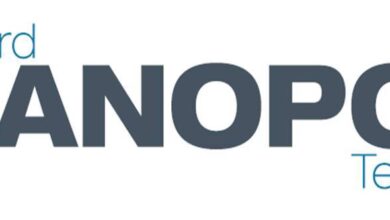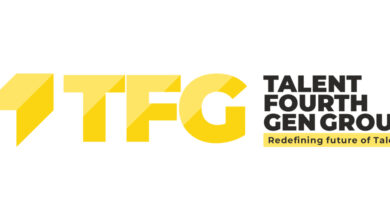Global Hybrid Vehicle Industry Research Report 2021: Five Major Hybrid Technologies Compete Fiercely in China – ResearchAndMarkets.com

DUBLIN–(BUSINESS WIRE)–The “Global and China Hybrid Vehicle Industry Research Report, 2021” report has been added to ResearchAndMarkets.com’s offering.
In September 2020, President Xi Jinping pledged that China would reach its CO2 emissions peak before 2030 and achieve carbon neutrality before 2060. For this goal, China proposes to carry out transformation and innovation in ten fields, among which the construction of a green low-carbon transportation system and the promotion of green and low-carbon technological innovation involve automotive energy-saving technologies covering electric vehicles, hybrid, and hydrogen fuel cells.
Measures for the Parallel Management of Average Fuel Consumption of Passenger Car Companies and New Energy Vehicle Credits (hereinafter referred to as the dual credit policy) stipulates the average fuel consumption credits of passenger car companies and new energy vehicle credits. In 2020, the passenger car industry’s fuel consumption credits were -7.33 million and new energy vehicle credits 3.3 million. In the face of the regulation on emission peak, carbon neutrality and double integration, hybrid technology will be one of the important technical routes for automakers to meet the standards for automakers.
The Energy-Saving and New Energy Vehicle Technology Roadmap 2.0 released by China-SAE points out the development goal of China’s automobile industry: the total industrial carbon emissions should reach the peak around 2028 in advance of the national carbon emission reduction commitment, and the total emissions should drop by more than 20% from the peak by 2035. The sales volume of new hybrid passenger cars should account for 50%-60% of traditional energy passenger cars by 2025, 75%-85% by 2030, and 100% by 2035. This clarifies that energy-saving vehicles do not represent a transitional technology, but a high-efficiency technology that allows engines and motors to complement each other, replaces internal combustion engine vehicles on a large scale within a reasonable price range, and reduces fuel consumption.
Currently, hybrid power is mainly being developed in Japan, the United States, Europe, and China which choose different hybrid technology roadmaps according to their technical reserves and development goals:
- Japanese cars are mainly powered by Toyota’s Power-split (PS) and Honda’s i-MMD series-parallel hybrid. Through strong hybrid, the best fuel-saving effect can be achieved. For example, Toyota THS available in Toyota Prius adopts a single planetary row structure design to maximize fuel economy in common vehicle speed ranges. Toyota is committed to licensing the hybrid technology to Chinese automakers.
- American cars are mainly based on Power-split (PS) of GM and Ford; for example, the general hybrid power system of GM LaCrosse adopts a dual-row planetary structure design to achieve two “power split” modes (high and low speed modes) and one or multiple fixed gears so as to further improve the fuel economy and transmission efficiency of the car.
- German cars are mainly based on 48V low-voltage and high-voltage hybrid technology arranged in P0/P2. The system replaces traditional lead-acid batteries with power-type lithium-ion batteries with a voltage of 48V and an energy of less than 1kW – h, and replaces traditional starter motors and generators with B/ISG motors. A large number of Chinese plug-in models have exploited German technology roadmap and suppliers.
- Chinese automakers have transferred from the original technology diversification to the dual-motor-based series-parallel mode. For example, the GAC Trumpchi Electromechanical Coupling System (G-MC) adopts the series-parallel mode, which is mainly used for plug-in hybrid; BYD’s DM-i super hybrid technology adopts the EHS to open up a new technology system in addition to Toyota’s THS Power-split and Honda’s i-MMD.
- The series extended-range hybrid power roadmap is represented by Nissan e-Power, Lixiang ONE, Dongfeng Voyah, etc.; In series mode, the engine and the electric motor are not mechanically connected, so the engine can obtain the best efficiency at different vehicle speeds and loads. In 2020, 32,600 Lixiang ONE cars were sold, ranking first in the extended-range field.
The world’s mainstream OEMs have conducted diversified explorations in hybrid systems, and finally chose the hybrid strategy that is most suitable for their own models. This report summarizes the hybrid strategies of the global mainstream automakers.
Key Topics Covered:
1 Overview of Hybrid Vehicles
2 Hybrid Vehicle Industry Policies and Status Quo
3 Hybrid Vehicle Technology Roadmap
4 Hybrid Vehicle Technology Provider Profiles
- Valeo
- Bosch
- Continental / Vitesco Technologies
- BorgWarner/Delphi
- Schaeffler
- GKN
- Hunan Corun New Energy
5 Hybrid Vehicle Manufactures Profiles
- Toyota
- Honda
- Nissan
- Volkswagen
- General Motors
- Volvo
- BMW
- BYD
- Geely
- SAIC
- GAC
- Great Wall
- Chery
For more information about this report visit https://www.researchandmarkets.com/r/vcfa7j
About ResearchAndMarkets.com
ResearchAndMarkets.com is the world’s leading source for international market research reports and market data. We provide you with the latest data on international and regional markets, key industries, the top companies, new products and the latest trends.
Contacts
ResearchAndMarkets.com
Laura Wood, Senior Press Manager
[email protected]
For E.S.T Office Hours Call 1-917-300-0470
For U.S./CAN Toll Free Call 1-800-526-8630
For GMT Office Hours Call +353-1-416-8900




